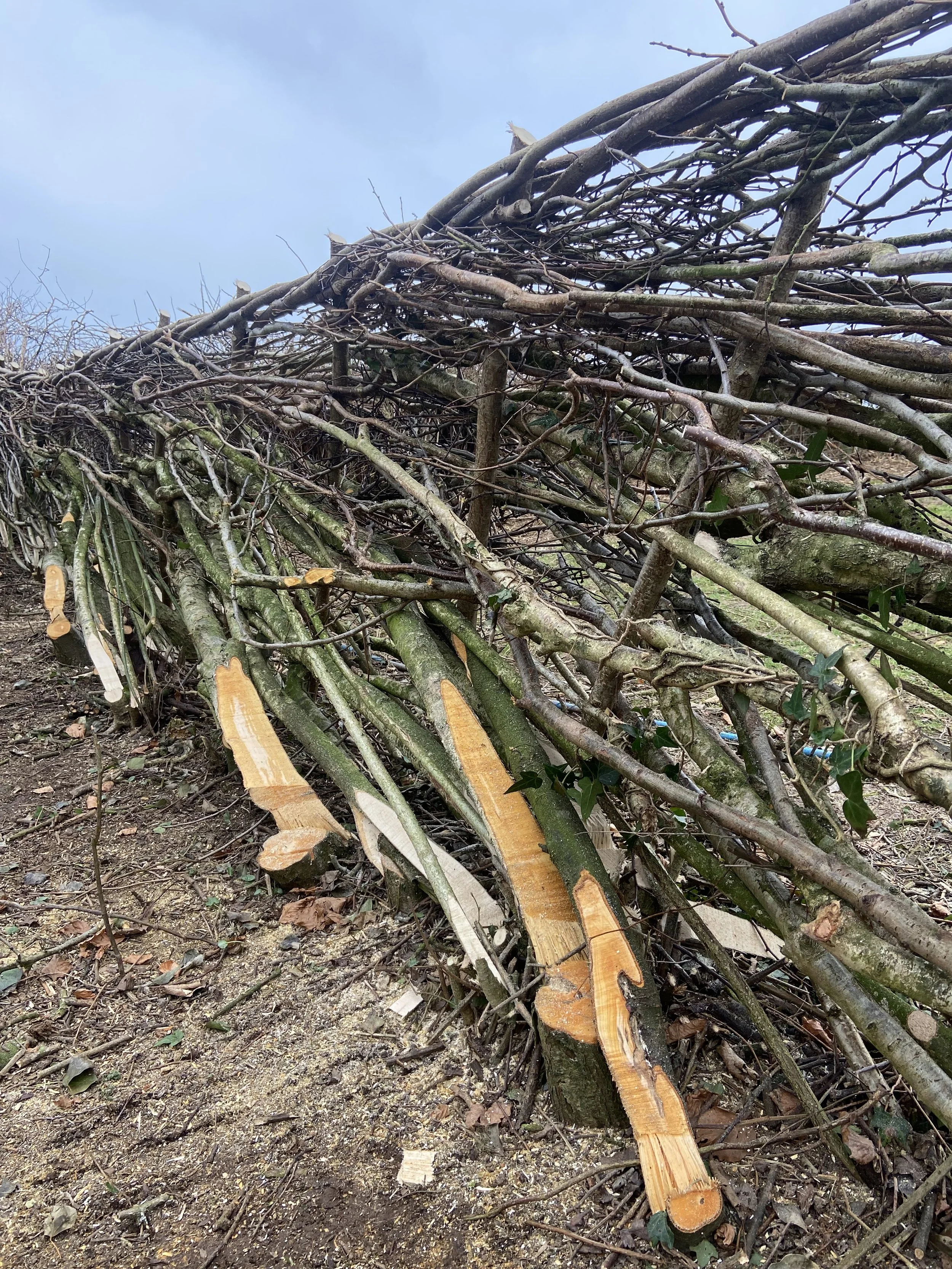Hedgelaying Styles
For centuries, hedgerows were used as the primary method for enclosing fields in the UK. They served primarily to shelter crops and retain livestock, alongside creating a valuable habitat for farmland wildlife.
While hedgelaying was once a common practice across the UK, different regions developed their own unique styles based on local farming needs and available materials. Today, as interest in hedgerows and their many benefits grows, it’s more important than ever to keep these traditional skills alive. Paul teaches and works in several classic styles, but the techniques he shares are adaptable across the wide variety of hedgelaying approaches—over 30 of which are still regularly practiced across the country.
The Midland Bullock
A hedgerow which is single brushed, meaning all of the bushy tops of each plant are angled into the field where livestock were kept.
The stakes that support the hedge run just adjacent the row of plants and are bound tightly with long hazel or willow rods. This hedge, as the name suggests was used primarily for retaining beef animals.
The Welsh Border
This hedgerow is double brushed, meaning the bushy tops of the plants are angled either side of a central row of stakes.
The stakes are set at an angle in the opposite direction to that of the laid stems and are then bound to add rigidity to the structure. This hedgerows primary function was the retention of sheep.
Gower
A hedge laid on top of an earth bank, horizontally with no stakes or binders used.
The laid stems are held in position by crooks or rods that pin them tightly to the top of the bank, encouraging propagation of new plants and so increasing density.
Dorset/Devon
Very similar to the Gower style.
Both of these styles are also laid horizontally incorporating an earth bank into the boundary. The bank may, or may not be faced with stone.





